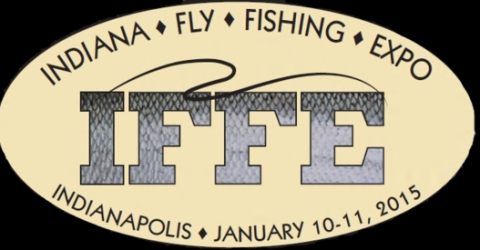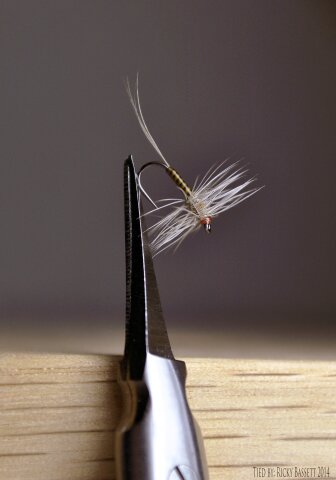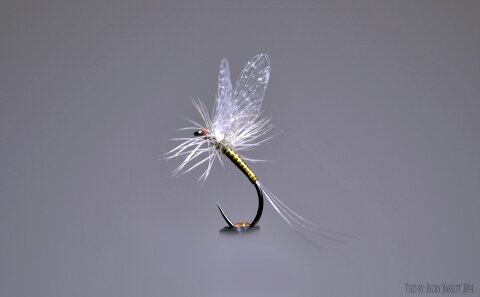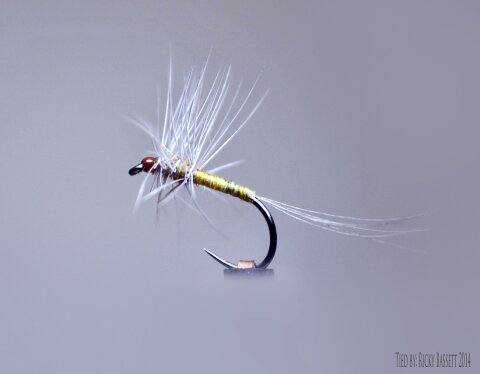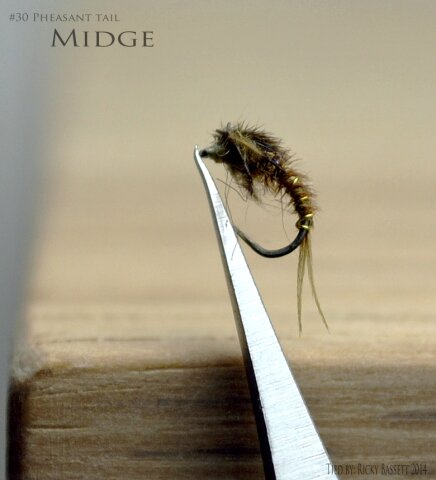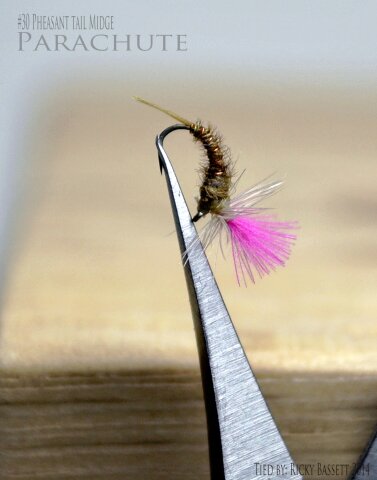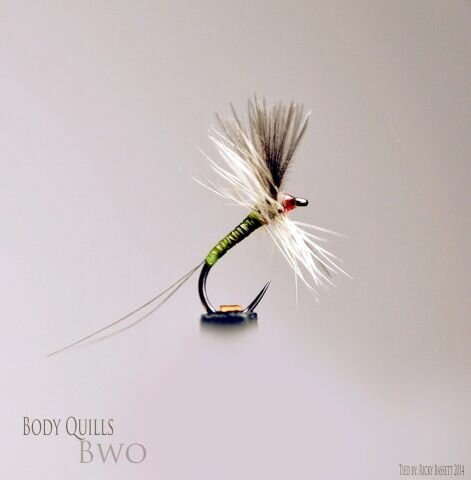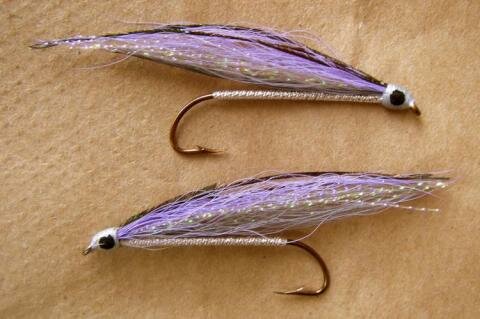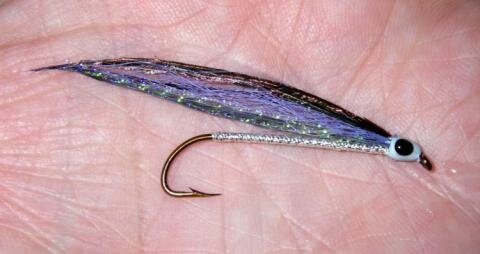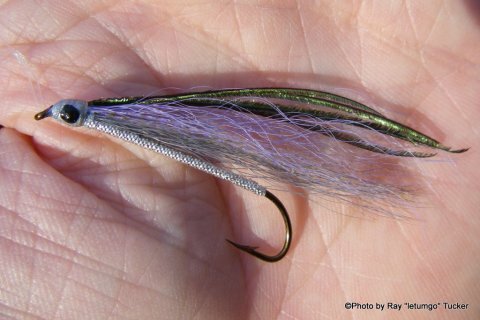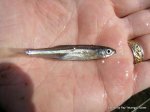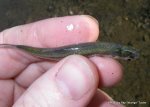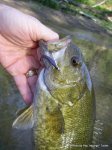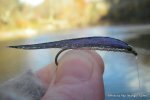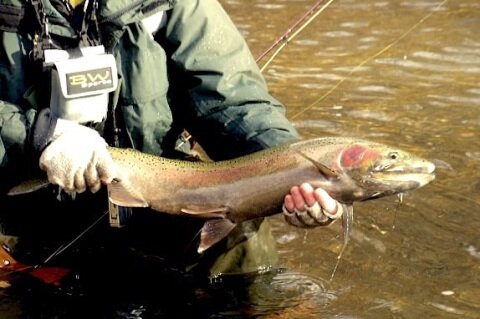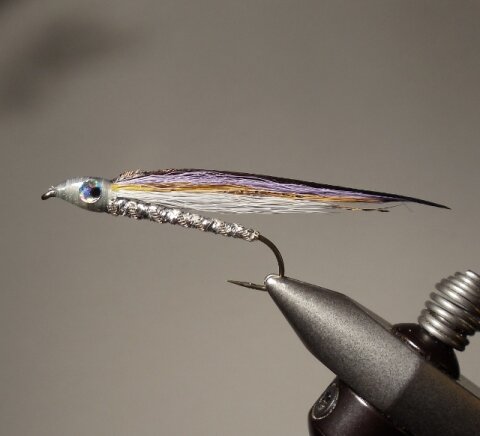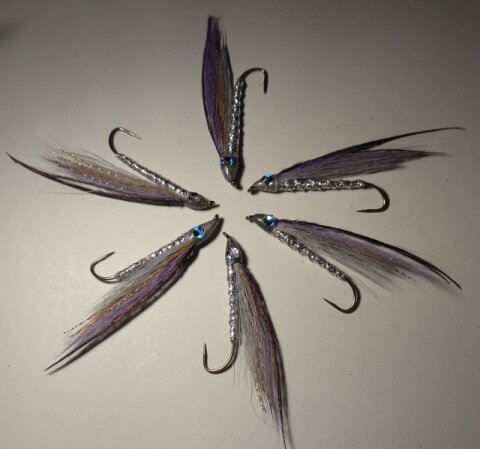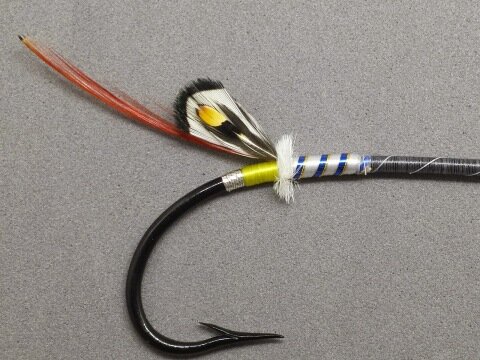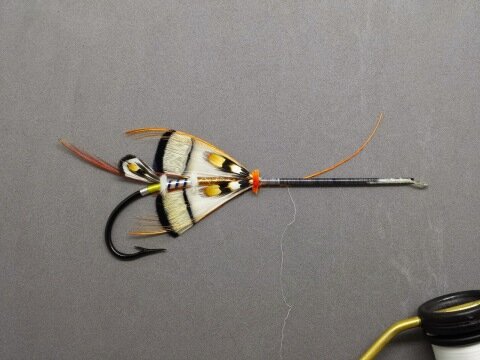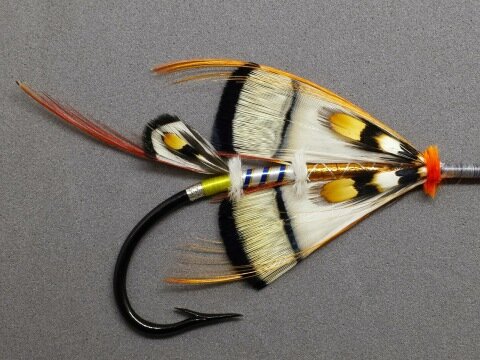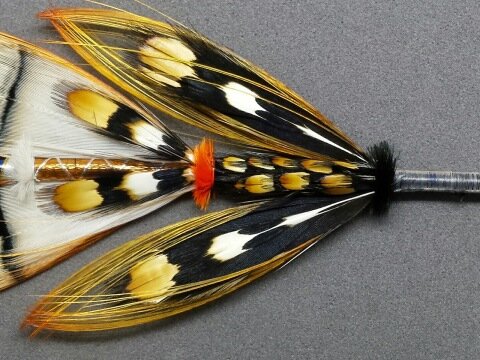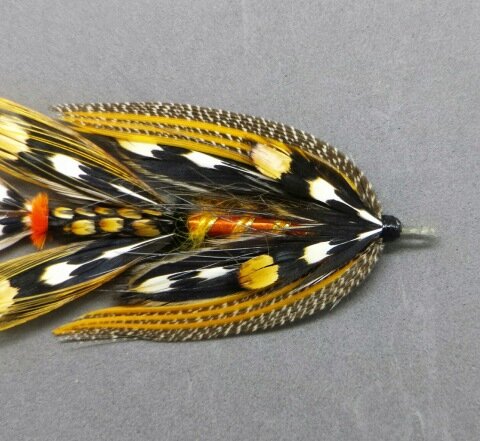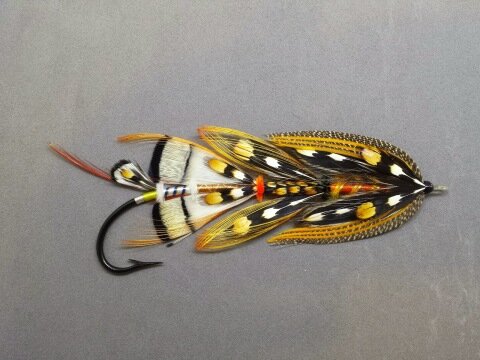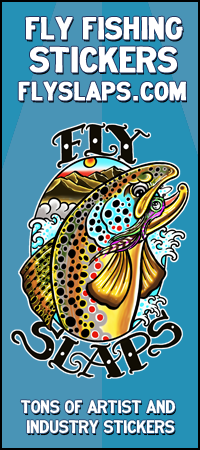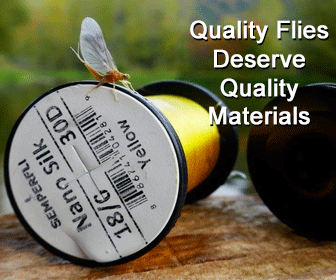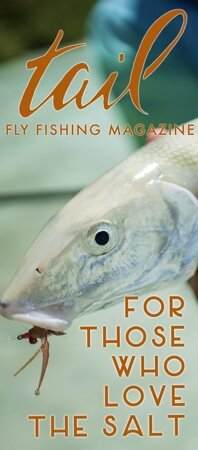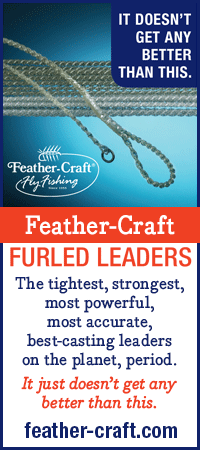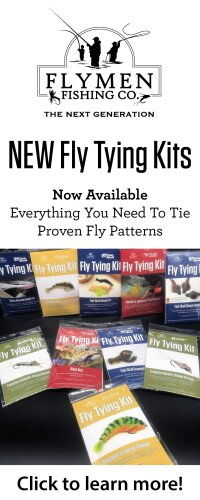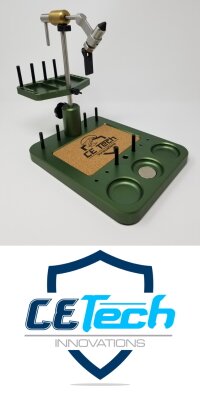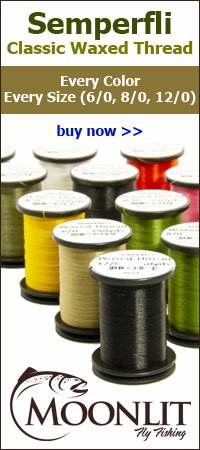
I am very new to the Fly tying scene, so when Paul contacted me about featuring some of my flies on Frankenfly, I was excited to have the opportunity to do so. I grew up in Long Island, NY and still live there today. I was introduced to fishing at a very early age and was instantly hooked! When I was about ten years old I remember looking at all the flies in the bins of an old tackle shop and being so intrigued! From that point I wanted to learn how to tie them myself. Years later in 2007 after learning to fly fish, I finally got a small tying kit that eventually grew to a small room.
I was determined to learn, so I would read whatever books I could get my hands on and I watched tons of different tying videos and just had fun with it. I think it comes down to enjoying it and being passionate about it, that is really why I stuck with it. I literally would tie flies whenever I wasn’t fishing. For me, if I wasn’t fishing…tying kind of gave me the same feeling I would get when I would be out on the water. I fell in love with everything about tying. From the creative process, to all the different materials and tools, to the insects that we replicate, it’s a constant learning experience that never stops.
I have recently started tying flies for Joe Fox from Dette Trout Flies. Some of the flies I tie are available beside the other great fly patterns from other domestic tiers that tie for the shop. It was when I transitioned into commercial tying that I felt the need to learn how to photograph my work and get it out on the internet for people to see. I was also encouraged by my now good friend, Joe, to start tying at some of the shows this season. At first I was extremely nervous, but the warm welcome I got from a lot of the other tiers and people in general was what made me feel at home. Besides that, I have made a lot of great friends and realized we all share a common interest at the end of the day. We all love to fish and tie and can all learn from one another. I look forward to wherever this journey takes me.
Thank you all for taking the time to look at my work.
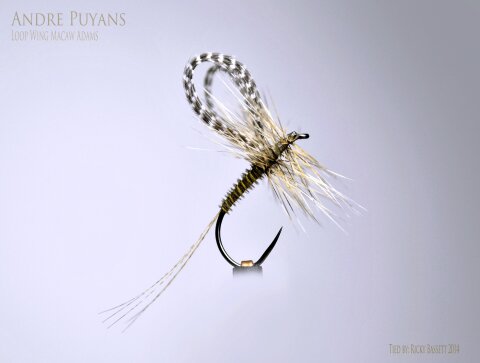
Andre Puyans Loop Wing Macaw Adams
Andre Puyans Loop Wing Macaw Adams
Hook: Partridge SLD size 12
Wing: Teal tied in a loop wing
Tail: Coq de leon
Body: Macaw wrapped over thin layer of wet zap a gap
Hackle: Cree

Reel Wings Macaw
Reel Wings Macaw Adams
Hook: Partridge SLD
Thread: Tan 8/0 flat thread
Wings: Joseph Ludkin Reel Wings upwing spinner
Tail: Coq de leon
Body: Macaw wrapped through thin layer of wet zap a gap
Hackle: Cree
Head: coated with deer creek diamond fine
A pattern I Created based off of Andre Puyans loopwing macaw adams just with the change to a more modern material called Reel Wings for the wing substitute. Reel Wings were designed to be fished by fisherman. Its a one piece pre-cut wing material with veins etched into the material. They are the most delicate felling and realistic looking material I have ever tied with and they are pretty easy to work with as well!
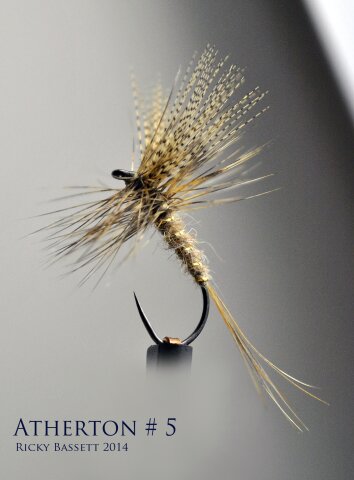
Atherton # 5
Atherton # 5
Hook: Partridge SLD#12
Thread: Tan 8/0
Wings: Wood Duck
Tail: Dark Cree
Rib: Fine oval gold tinsel
Body: Hare’s Ear mix of speckled guard hairs blended with pinkish hair at base of ears)
Hackle: Dark Cree
Head: Thread coated with DC Diamond fine tack free
John Atherton is one of my Favorite tiers whom created flies with impressionistic qualities and are extremely beautiful to look at like works of art. His patterns have stood the test time.
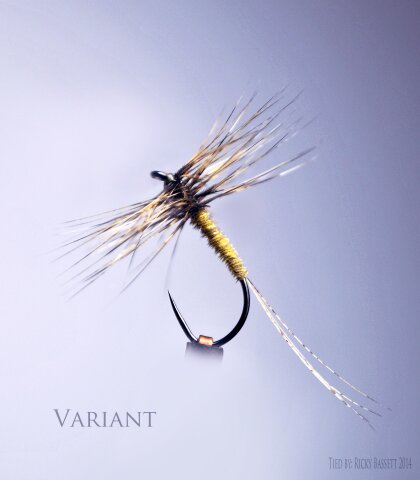
Cree n Macaw Variant
Cree n Macaw Variant
Hook: Partridge SLD size 12
Thread: Tan 8/0 flat thread
Tail: Coq de Leon
Body: Macaw (taken from the base of the feather where it was all one color of creamy golden yellow) wrapped through thin layer of wet zap a gap
Hackle: Cree
Head: Deer Creek diamond fine tack free
Art Flick favored variants very much so and I love to tie them as well as fish them they are a lot fun!! Its a very effective general searching pattern when there’s nothing happening as far as hatches. Great for the summer time in the north east.
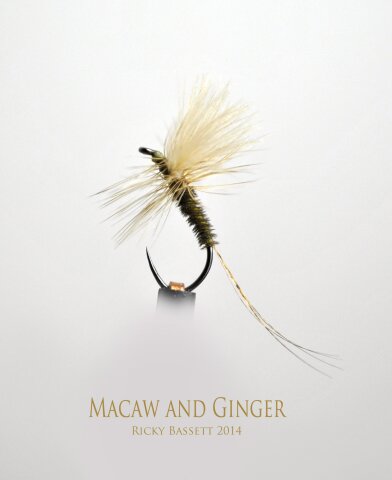
Macaw Dry
Macaw and Ginger
Hook: Partridge SLD #16
Thread: Pale Morning Dun 8/0
Wings: Khaki Campbell CDC
Tail: Coq de Leon
Body: Macaw wrapped through thin layer of wet zap a gap
Hackle: Whiting Dark barred Ginger
Head: thread finished with DC diamond fine tack free
To be continued…
